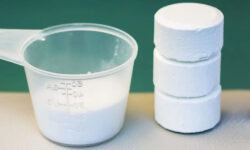Running a hot tub is not as easy as many think because you must ensure that all chemistry levels are balanced. One of the things you need to monitor is calcium hardness or total hardness. Too much calcium hardness can lead to irritations and potentially damage your hot tub.
The most effective way to decrease calcium hardness in a hot tub is to either partially or completely drain your hot tub and refill it with fresh water. Alternatively, you can buy calcium hardness reduces and add them to your hot tub’s water.
Read on as I will provide more information on how to deal with high calcium hardness. I will also discuss what causes calcium hardness to increase. Moreover, I will also provide relevant information on the health risks of high calcium hardness and how it affects your hot tub.
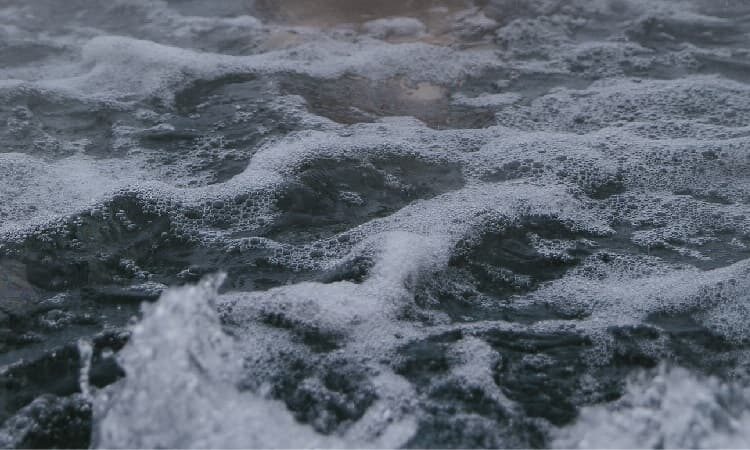
Quick Navigation
What Causes High Calcium in a Hot Tub?
What is calcium hardness anyway? It measures how hard or soft your hot tub water is and the amount of dissolved calcium and magnesium in it.
A hot tub’s ideal calcium hardness level is 150-250 ppm. Low calcium hardness is not good as it makes the water feel slimy and can cause corrosion on some of the hot tub’s parts.
Similarly, high calcium hardness is also not good. I will discuss the effect of high calcium hardness in the next sections. But first, what causes high calcium hardness in a hot tub?
Three things can cause calcium hardness to increase: high pH level, fluctuating temperature, and hot tub water evaporation. The high pH level of the hot tub is, of course, driven by the chemicals you may have added.
Related Read: How to Increase Water Hardness in Hot Tub?
High pH Level
If you do not monitor your hot tub water’s chemistry, you are likely to face one issue after another. The pH level of your hot tub is another critical thing to keep in the proper range. The right pH level of a hot tub is between 7.2 and 7.8 ppm.
If the pH level of your hot tub is high, you will start to notice scaling. The white or yellow flakes in your hot tub water indicate that your hot tub’s pH level is extremely high. The flakes, of course, tell you that calcium hardness is also high.
If you have a problem with your hot tub’s pH level, you must address it first. Some people’s common mistake is adding calcium hardness reducers, thinking that it will fix everything. I suggest you address the pH level issue before dealing with high calcium hardness.
Fluctuating Temperature
Another culprit of high calcium hardness in a hot tub is temperature fluctuation. Your hot tub water’s irregular rising and falling temperature can drive up its calcium hardness. Calcium can precipitate when the water temperature is high.
If your hot tub temperature fluctuates, you need to troubleshoot it. Fluctuating hot tub temperature can be due to a faulty thermostat or insulation system.
Evaporation
Like many others, you might also wonder why evaporation can increase calcium hardness. Well, the reason is simple. As water evaporates, the calcium stays in your hot tub.
Calcium does not evaporate. So, the more water evaporating from your hot tub, the high chances that your hot tub’s calcium hardness will measure high.
Can Using a Hot Tub With High Calcium Hardness be Dangerous?
Using a hot tub with high calcium hardness is not very risky. However, a hot tub with excessive calcium hardness may not be good for your eyes and skin. Irritations can happen because the pH is hard to balance if the calcium hardness is high.
If you have very sensitive skin, it is a must that you address the issue immediately. Otherwise, you will suffer from the irritations that it brings. Measuring your hot tub’s calcium hardness once every month or every two months is a good practice.
That’s about it for the dangers of high calcium hardness. The rest of the negative effects of high calcium hardness will be on the hot tub.
Ways to Lower Calcium Hardness in a Hot Tub
Lowering calcium hardness in a hot tub is much more difficult than increasing it. However, you must do it anyway to keep your hot tub healthy.
Reducing the calcium hardness in your hot tub is a must when it exceeds 250 ppm. Hot tub beginners usually think that they can lower calcium hardness by adding more water to the tub. However, this is not going to help.
Increasing the hot tub’s water does not reduce the calcium hardness level. This fact is because as the water evaporates, the calcium stays in the water.
If adding water to your hot tub does help you balance calcium hardness, there are a couple of methods you can use. These methods are: using calcium hardness reducers and draining your hot tub.
1. Calcium Hardness Reducers
You can buy a calcium reducer in the market. These products have become a go-to product for hot tub and pool owners to help alleviate issues with total hardness.
But the question is, is this the ultimate solution? Does it reduce the calcium hardness for good?
Calcium hardness reducers work by temporarily binding the calcium. It does work for a few weeks while the chemicals are still working. But the calcium goes to the water again when they are broken down.
Therefore, I consider calcium reducers a temporary fix or a band-aid solution. Although you can keep adding the product every 3 to 4 weeks, it may not be very economical. Plus, it doesn’t address the issue for good.
2. Drain Method
In most cases, the calcium hardness level goes out of balance because of the chemicals added to the hot tub. Algaecides, clarifiers, sanitizers, and other chemicals you add to the hot tub may trigger calcium hardness to go out of balance. There is no better way to address the issue than draining the hot tub and filling it with fresh water.
Most hot tub owners agree that it is the ultimate solution to reduce calcium hardness. This method is considered the natural way of decreasing calcium hardness. Additionally, all the chemicals that cause issues with your hot tub’s water chemistry will be released.
Some hot tub owners will only partially drain the hot tub. You can also do the same. This method can be ideal if the calcium hardness level of your hot tub is not extremely high.
On the other hand, if the calcium hardness measures extremely high (when it reaches almost or over 1000 ppm), it is probably best to do a full drain. If you have not replaced your hot tub water in the last four months, it can be the perfect time to do it anyway.
When refilling your tub, the water must contain low calcium. Otherwise, you are not solving anything. Checking the water quality before filling your hot tub is a good practice.
Distilled water is the ideal water to use for hot tubs and spas. But if you find this expensive, you can use ordinary tap water, but you need to pre-filter it. Filtering the water helps remove the impurities and small particles.
It is important to note that ordinary water filters may not remove water chemicals like calcium. The purpose of pre-filtering is to make the water cleaner and ready for treatment.
Can a High Calcium Hardness Level Ruin Your Hot Tub?
Not minding the high calcium hardness in your hot tub can ruin it. But how does it affect the hot tub?
If your hot tub has high calcium hardness, its water will become cloudy. It is not very pleasurable to be soaking in cloudy water. Cloudy water may not damage the hot tub but indicates a scale build-up.
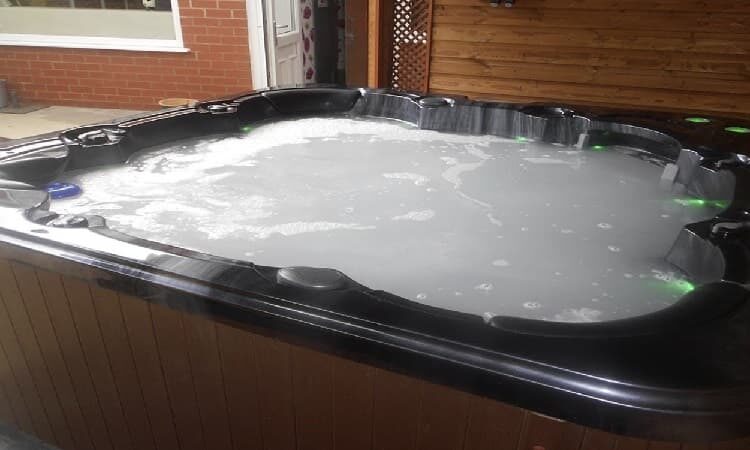
Scaling is a serious problem for hot tub owners. If the problem is not addressed, it will lead to the clogging of the hot tub filters. Furthermore, it compromises certain parts of the hot tub, particularly the filter.
High calcium hardness can also make the hot tub heater inefficient and lead to the failure of your hot tub’s heating system. The scale build-up on the pipes and coils can compromise heat transfer. In the long run, it will eventually cause the equipment to fail.
Balancing the calcium hardness of your hot tub is probably cheaper than repairing damages. Replacing a damaged filter may not be that expensive, but a heating system failure can make you scratch your head.
Conclusion
Keeping the calcium hardness in the acceptable range of 150 to 250 ppm is critical. If the calcium hardness becomes extremely high, your hot tub may not be healthy for the bathers as it can cause skin and eye irritations. Moreover, high calcium hardness may cause scaling, damaging important hot tub parts like the filter and the heater.
You can use calcium hardness reducers to lower the calcium content of your hot tub. However, this can only be a band-aid solution to the problem. The best and the most natural way to decrease calcium hardness is to either partially drain or completely drain the hot tub and refill it with fresh water.

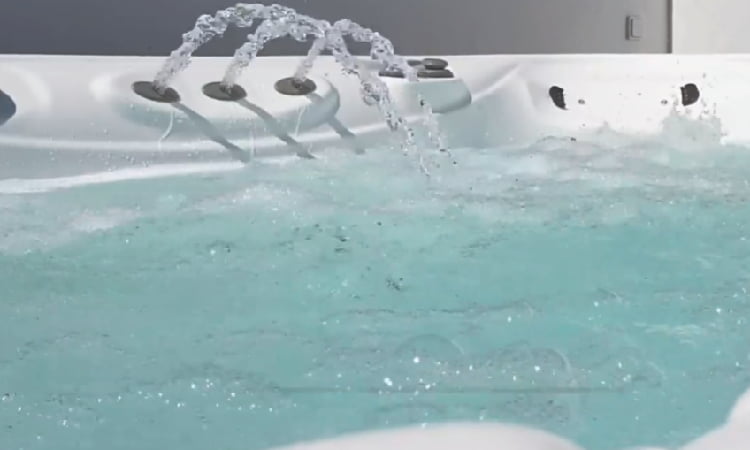
![What is a Stabilizer in a Hot Tub? [Types of Stabilizers] what is a stabilizer in hot tubs and how does it work](https://hottubtales.com/wp-content/uploads/2023/10/what-is-a-stabilizer-in-hot-tubs-and-how-does-it-work-250x150.jpg)
![Can You Over Shock a Hot Tub? [What to Do if You Did?] can you over shock a hot tub](https://hottubtales.com/wp-content/uploads/2023/10/can-you-over-shock-a-hot-tub-250x150.jpg)
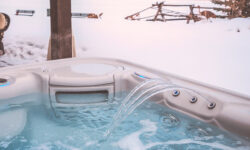
![How to Lower Bromine Level in Hot Tub? [& Signs of High Levels] how to lower bromine level in hot tub](https://hottubtales.com/wp-content/uploads/2023/10/how-to-lower-bromine-level-in-hot-tub.jpg)
